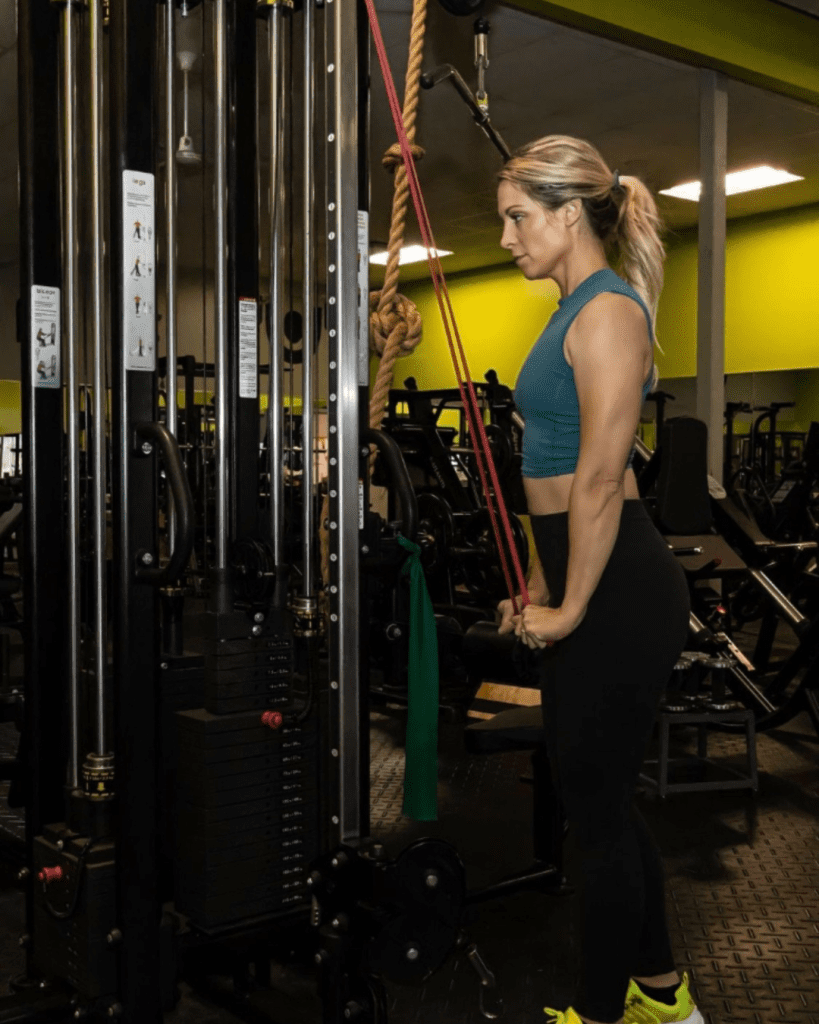Peptides have gained significant popularity in recent years for their role in muscle growth, fat loss, and recovery. These short chains of amino acids act as signaling molecules in the body, often stimulating the production of growth factors, collagen, and other essential proteins. However, peptides alone are not a magic solution for muscle development or athletic performance. Without resistance training, their benefits are significantly diminished.
To fully harness the power of peptides, incorporating a structured weightlifting regimen is essential. This article explores the relationship between peptides and resistance training, the science behind their effectiveness, and why strength training is a non-negotiable factor when using peptides for body composition and performance improvements.
The Science Behind Peptides and Muscle Growth
Peptides like Growth Hormone Releasing Peptides (GHRPs), CJC-1295, BPC-157, and IGF-1 are widely used because of their ability to enhance muscle recovery, promote fat loss, and improve overall physical performance. Many of these peptides work by increasing the release of growth hormone (GH) or stimulating protein synthesis, leading to potential muscle hypertrophy and improved tissue repair.
However, peptides do not create muscle mass or strength in isolation. They function as catalysts, enhancing the body’s natural ability to build and repair tissues—but only when a stimulus is present, such as resistance training.
Journal Evidence on Peptides and Training Synergy
A study published in the Journal of Clinical Endocrinology & Metabolism highlights the necessity of mechanical stress, such as weightlifting, for peptides like IGF-1 (Insulin-like Growth Factor 1) to exert their muscle-building effects.
Smith notes, “The anabolic effects of IGF-1 are significantly enhanced in individuals engaging in progressive resistance training. Without mechanical overload, IGF-1 expression remains insufficient to promote significant hypertrophic adaptation.” 1
This study reinforces the idea that peptides act as enhancers, not replacements, for the physical stress required to stimulate muscle growth.

Why Peptides Are Ineffective Without Resistance Training
- Lack of Muscle Stimulation = No Growth
Peptides such as IGF-1 and CJC-1295 are most effective when an external stimulus, like weightlifting, signals muscle repair and growth. Without this stimulus:
- Muscle protein synthesis does not increase significantly.
- There is no mechanical breakdown of muscle fibers to initiate repair and hypertrophy.
- Peptides may primarily enhance recovery rather than actual muscle gain.
For example, BPC-157, a peptide known for its healing properties, is widely used for injury recovery. However, the peptide cannot properly maximize tissue repair or reinforce connective tissues if an athlete does not engage in rehabilitation exercises or strength training.
- Fat Loss Effects Are Reduced Without Strength Training
Many peptides, particularly GH-releasing peptides (GHRPs) and CJC-1295, promote fat metabolism by increasing growth hormone levels. However, without resistance training:
- Fat oxidation is not as effective because muscle tissue is not actively demanding more energy.
- The metabolic benefits of peptides are not fully realized.
- Body composition changes remain minimal, as lean muscle mass is not being developed.
Strength training increases resting metabolic rate (RMR) and lean muscle mass, making fat-burning peptides more effective by promoting a calorie-burning environment.
- Recovery Benefits Are Limited Without Physical Stress
One of the most touted benefits of peptides is enhanced recovery, particularly with compounds like TB-500 and BPC-157. However, without training-induced muscle stress, these peptides may simply maintain existing tissue integrity rather than improve performance.
- Muscle repair and regeneration require initial tissue breakdown.
- Collagen-stimulating peptides are most beneficial when muscles and connective tissues undergo consistent loading and adaptation.
- Without training, these peptides might contribute to minor tissue healing but not structural enhancement.

The Role of Resistance Training in Maximizing Peptide Benefits
- Stimulating Growth Hormone (GH) Naturally
While peptides such as CJC-1295 and Ipamorelin stimulate growth hormone release, resistance training is a natural GH booster on its own. Heavy strength training—especially compound movements like squats, deadlifts, and bench presses—can elevate endogenous growth hormone and testosterone levels, complementing peptide supplementation.
- The combination of strength training and GH-boosting peptides creates a synergistic effect, leading to more pronounced muscle growth and fat loss.
- Enhancing Muscle Protein Synthesis
When peptides such as IGF-1 and CJC-1295 are introduced into the body, they increase the rate of muscle protein synthesis (MPS). However, without the mechanical tension from weightlifting, MPS remains suboptimal, leading to little to no gains in muscle mass.
- Lifting weights activates the mTOR pathway, a key signaling mechanism for muscle growth.
- Peptides like IGF-1 enhance mTOR activation but require training-induced muscle damage for optimal adaptation.
- Improving Strength and Performance Outcomes
Athletes using peptides for injury recovery, strength, or endurance gains must incorporate resistance training to see measurable improvements. Peptides like TB-500 and BPC-157 help heal soft tissue injuries, but physical therapy and progressive resistance training are essential for regaining strength and function.
- Adaptive strength increases occur when muscles are consistently challenged.
- Peptides facilitate the repair of microtears, but new muscle fibers are not being built without training.
Peptides Are Only as Effective as the Training Stimulus
Peptides offer tremendous potential in improving muscle recovery, growth, and performance—but only when combined with resistance training. Without strength training, the body lacks the necessary stimulus for peptides to exert their full anabolic and recovery benefits.
For anyone considering peptide supplementation, the focus should remain on progressive overload, structured strength training, and consistent physical activity. Peptides can amplify results but cannot replace the fundamental requirement of mechanical stress and muscle adaptation through resistance training.
References
- Smith, J. (2021). “The Role of IGF-1 in Skeletal Muscle Adaptation to Resistance Training.” Journal of Clinical Endocrinology & Metabolism, 106(5), 1285-1297.
- Brown, L. (2020). “Growth Hormone and Exercise: Mechanisms of Muscle Hypertrophy and Fat Metabolism.” Sports Medicine Journal, 54(3), 198-214.
- Miller, K. (2019). “Peptides in Sports Recovery and Injury Rehabilitation.” Journal of Sports Medicine and Physiology, 43(2), 65-78.






0 Comments